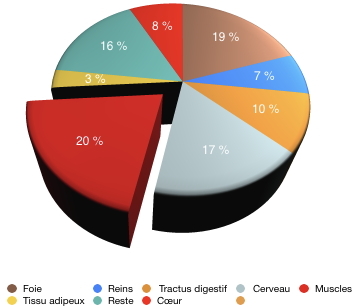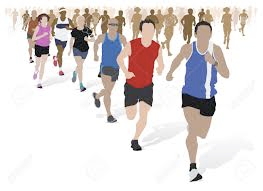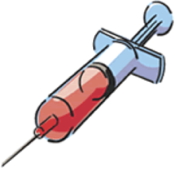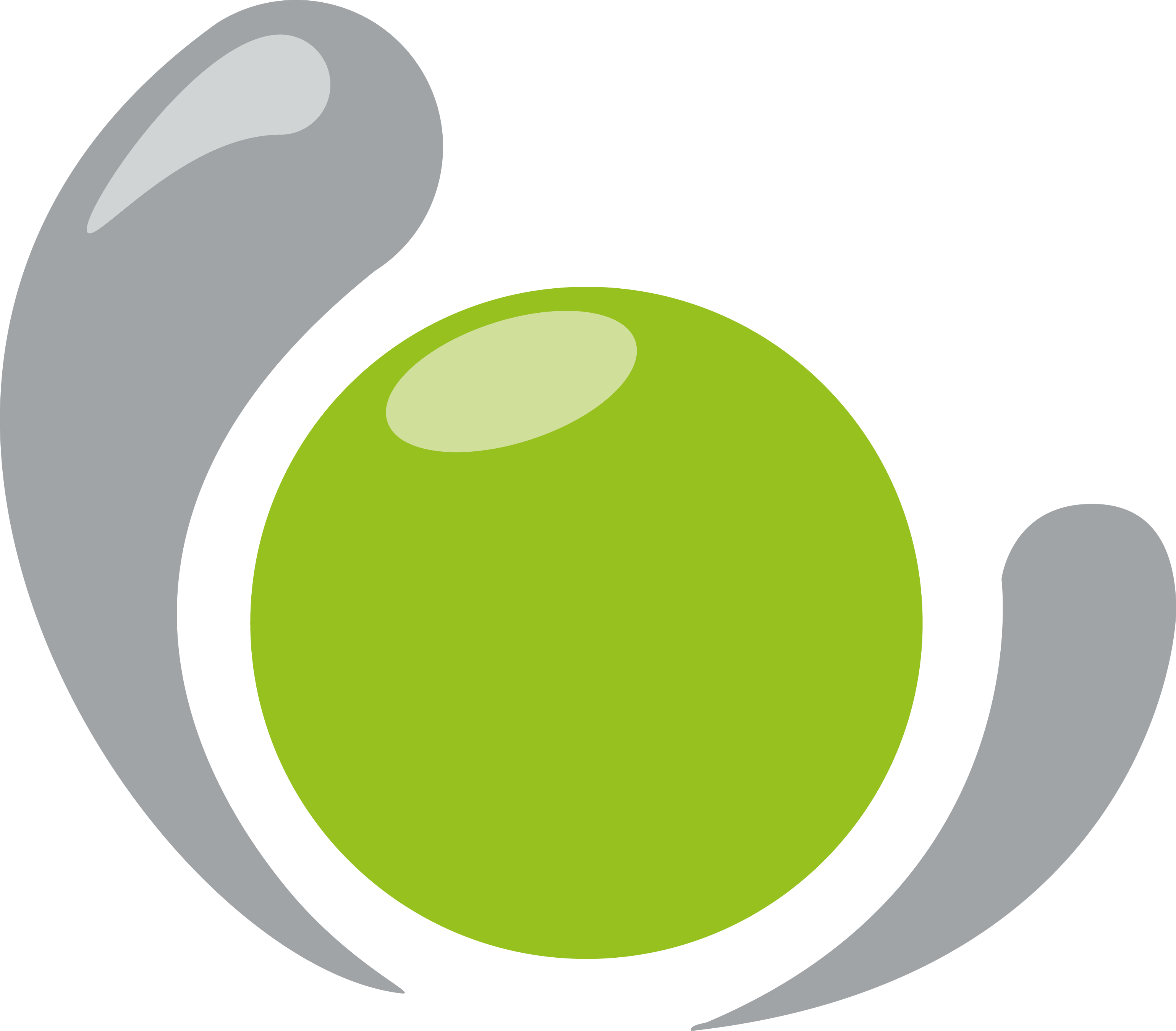Permanent Muscle Motility and Venous Return
5 arguments in favour of MMP
As classical theories do not provide the expected solutions to the motor problem of venous return, we turned our attention to an actor already recognized by all when it is active, i.e. the muscle.
We all know that during its contraction, the muscle expels the blood it contains into the venous tract. It thus participates fully in the dynamics of venous return. There is no major problem concerning venous return during exercise, it is during the rest phases that the question arises: Which actor, hitherto hidden, gives enough energy to allow venous blood to return to the right heart?
Let’s look again at the muscle, but this time during its resting periods. But above all, let’s lay our hands on it. Our hand perceives that the muscle is active (subliminal for the subject) when it is at rest.
We have called this activity Permanent Muscle Motility (PMM).
Permanent Muscle Motility (PMM) is the activity characterized by the contraction and relaxation of skeletal muscles when they are not moving (even while sleeping). This motility is perceived by the hands of osteopaths.
Description
The muscles constantly fill up and then contract, expelling the blood from their veins. This movement is spontaneous and involuntary, it occurs outside the dynamic activity of the muscle.
This activity is also found during the static phases of the muscle, it is perceptible in the standing position at the level of the legs.
In the calves of a standing man, some of the muscle fibres work in a static way (for maintaining an erect position), we are thinking here of the fast oxidative fibres and the others in dynamic mode (PMM) (for vascular function), the slow oxidative fibres.
We perceive clinically at rest or in static work (standing) :
- A diastolic phase when the muscle fills (muscle diastole).
- A systolic phase when the muscle contracts and empties (muscular systole).
All the muscles of the body are divided into two distinct groups:
- The Inspir muscles contract (PMM at rest) in synergy with thoracoabdominal inspiration.
- The Expir muscles contract (PMM at rest) in synergy with the thoraco-abdominal expiration.
Elements or evidence in favour of the existence of MMP?
Subjective and objective elements :
1. The structures
We have seen that muscle tissue is the main motor of venous circulation when it contracts. Our proposal is that it is also at rest. All the elements necessary for the muscle to act as a pump are present in the muscle:
Veinlets
Glomus
Nerve receptors
Calcium reserves
Ad hoc muscle fibres (slow oxidative)
2. Palpation
The MMP hypothesis helps to explain the movements that osteopaths feel in the three dimensions of space. MMP explains well, for example, the alternating involuntary internal and external rotation of the knee. This would simply be a periodic contraction of the rotators of this joint. The same applies to all parts of the body where we would put our hands.
With simple training, we can feel the muscles periodically inflating and deflating.
Palpation approach to MMP

Patient is supine. The therapist positions himself on the side of the patient, places his hands on the medial gastrocnemius to appreciate the variations in volume. He will feel, normally, the muscle inflate and deflate 8 times per minute.
We can also modify these rhythms with magnets, acupuncture needles, after the release of injured joints, by heating or cooling a muscle, etc…
3. The resting tone
Our muscles even work even at rest!
There is a resting muscle tone, which is shown by measurements of muscle electrical potentials. What would be the point of such an activity when we sleep? It marks, in our opinion, the involuntary work of striated muscles, even at rest, and therefore MMP.
What could explain nocturnal low back pain if the muscles were not active at night? And why would they be active?
4. The energy distribution of the basal metabolic
The body consumes energy, even when we sleep. The skeletal muscles, as a whole, alone consume 20% of this energy. This makes them the largest consumers of energy, ahead of the liver and brain. What activity consumes this energy?
We propose to see MMP as one of the most important expenditure items of the basic metabolism.

Chups Jussieu morio – Dépense énergétique Vermorel morio
5. A matter of common sense
There is no difference between the capillaries of the deep vessels and those of the superficial vessels in the lower limb.
However, the pressure within the deep vessels is positive while that of the superficial vessels is almost nil. The blood in the superficial vessels is sucked up by the Venturi effect of the deep vessels downstream.
The capillaries of the deep vessels are located inside the skeletal muscles. There is therefore a correlation between intravenous pressure and the location of the capillaries depending on whether they are intra or extra-muscular.
Today, Permanent Muscular Motility is the only known coherent proposition that can explain the mechanism of blood circulation in the veins. In this hypothesis the skeletal muscle becomes the main motor (in volume) of blood circulation in front of the heart.
Permanent Muscular Motility seems to respond well to the gap left in physiology concerning venous return. It also gives a tangible response to the existence of movements felt by osteopaths at the body level.
How does venous return work?
We will describe several approaches to return circulation for the lower limbs.
- Venous circulation during dynamic effort
- Venous circulation during rest
- Venous circulation standing still
- And higher, farther away
1 Venous circulation during dynamic effort
Since the work of the Chevalier de Richerand (1817), it has been classically accepted that the muscles assume the venous circulation during effort. This is demonstrated during a Doppler examination, as the contracting muscle expels the blood it contains into the veins.
This circulation takes place in two distinct stages:
A period of filling or muscular diastole…
A period of muscular contraction or systole
Muscle diastole:
During a jog, a runner makes an average of 3 strides per second, so he takes a step in 0.33 seconds. The muscles of each lower limb must fill up every 0.66 seconds. The question that emerges is how can the muscles, during a Marathon, fill up so quickly? (Only the blood present in the veins is propelled by muscle contraction).

Three phenomena coexist and cooperate to ensure the muscular preload:
1. Pre-capillary shunts or arteriovenous anastomoses
They allow arterial blood to reach the venous circulation without passing through the capillaries. A significant quantity of oxygenated blood therefore passes through the veins. This phenomenon may explain why apneists can last up to 15 minutes without breathing… These shunts allow a rapid increase in the volume of blood circulating in the veins, in particular thanks to the second stretching mechanism described below. They also make it possible to modulate the pressure at the exit of the capillaries by reducing the pressure of the capillaries by the Venturi effect caused by the aspiration of blood from the venules at the confluence with the Suquet bypass. This could make it possible, according to Starling’s 2nd law, to control and promote osmotic exchanges between the blood contained in the capillary and the adjacent extra-cellular liquid.
2. The effect of capillarity by aspiration
The pre-capillary flow rates are already very low and the blood velocity would not be sufficient to explain the filling of the muscle in such a short period of time. Muscles need to be stretched to fill, the greater the length differential, the better the muscle will fill.
How do muscles fill up when running?
When we run and in all the physical activities of our lives our muscles stretch each other. For example, when the foot touches the ground the outer twin will contract to slow down the stretching and control the progress of the step. But during this time the inner twin allows itself to be stretched while it is not yet contracting. This phase allows the inner twin muscle to fill up. And during this passive stretching the blood will be sucked into the muscle like in a syringe…

The muscles of the whole body will generally benefit from being stretched to fill up. However, we will be able to find suitable muscle filling mechanisms according to local constraints. If this system seems “energy-consuming” (displacement of a blood volume greater than that necessary for local capillary exchanges), it must be taken into account that it is at the origin of the positive pressure in the central trunks. These by “Venturi effect” will suck the blood contained in the superficial vessels and thus assume the return vascularisation of the elements of the lower limb devoid of muscular fibres (skin, bone, fat mass, etc).
Therefore this system does not only assume a local circulation, but a more global and distant circulation (the superficial vessels). This allows us to survive superficial injuries without draining our blood…
The Suquet bypass
The filling of the muscle by capillary and suction effect can only be effective if the upstream pathways are free. The resistance of the capillaries to the passage of blood would make the effect of a muscular aspiration insignificant. It is the presence of the pre-capillary shunts that allows the filling of the venules with blood coming directly from the arterioles. This makes it possible to optimize the filling of the muscle (or preload). Thus the volume of blood ejection from the muscles to the veins will increase. This is the transposition of Starling’s first law to the muscle pump .
3. Cardiomuscular synchronization
(Discovery to be attributed to the author)
Other local phenomena are implemented to facilitate the filling of the muscle. When walking or running slowly (Marathon), the heart will adapt its rhythm to the strides of the runner or walker.
You can highlight this phenomenon by walking or running while taking your radial pulse (at the wrist). The cardiac systole will take place just after the foot touches the ground. Change the pace of walking and the heart rate will adjust to your pace. Try to trick your heart into stopping just before you step on a foot and you will see that your heart will stop beating for a short period of time. Then the heartbeat will resume as normal…
It is likely that this phenomenon favours the filling of the veins of the Bourceret sole just before the flattening of the foot on the ground, thus allowing an increase in pressure in the venous trunks thanks to a better filling of this passive pump.
Muscular systole:
For the lower limb, it is not a question of bringing the blood from the foot up to the heart. It is a ladder system, or several systems allowing the blood to go up from one level to the next, or other forces or other mechanisms will be implemented in order to go up to the next level.
The blood shall pass through :
- From the foot to the leg
The muscles of the feet and the flattening of the Bourceret sole when walking will allow venous blood to rise above the ankle. - From the leg to the thigh
The leg muscles, especially the inner twin, will allow venous blood to rise above the knee. - From the thigh to the abdomen
The muscles of the thigh and in particular the femoral biceps will allow venous blood to reach the abdomen and even the mediastinum. - From the abdomen to the mediastinum to the heart
During inspiration, the diaphragm compresses the abdomen, expelling the blood contained in the organs it contains through the hepatic vein to the mediastinal vena cava.
But it is a hunting of the organs and viscera (except the kidneys). The subdiaphragmatic vena cava will see its diameter reduced by half during inspiration (EchoDoppler) and could thus participate in the ascent of blood above the diaphragm.
But the aids to the upward movement of blood from the abdomen to the mediastinum described above are due to the activity of the diaphragm. What about 24 minute apneas that require continuous blood flow?
The effect of the PMM of the gluteal or psoas muscles will allow blood to flow up to the mediastinum.
2 Venous circulation during rest
MMP activity occurs when the skeletal muscle is not moving, either actively or passively. Muscle diastole and systole will have the same characteristics as when the muscle is actively or passively active.
MMP is a permanent manifestation except when the muscle is mobilized (actively or passively). MMP is therefore inhibited when the muscle is dynamically active. A pathological deficiency in this inhibition may well be the cause of Parkinson’s disease.
MMP has several unique characteristics, including alternating, thoraco-muscular synchronization, sweeping, etc.
3 Venous circulation standing still
During static contractions there is no change in the length of the muscle fibers that keep a soldier standing. But concomitantly with the static contractions the PMM is activated. This activity is perceptible on a standing subject. Put your hands on the inner twin on either side to perceive its volume, you will be able to feel beyond the tension of the static muscles the motility of the PMM muscles which make it inflate and deflate (isotonic contractions allowing a pump effect).
During static contractions there is no change in the length of the muscle fibres that keep a soldier standing. How can the circulation be maintained in spite of this?
On earth:
PMM is generally well adapted to an ordinary life. However, PMM can fail in certain long-lasting exercises such as standing up (in a sentry box) or during phases of trampling to which it does not seem perfectly adapted.
4 And higher, further
In space the MMP is subjected to another trawl. As we will see in the next episode, the MMP also assumes the role of joint drainer. While being in a state of weightlessness naturally seems to facilitate venous return, this is not the case for joint drainage functions, which require fixed support points to be more effective. It would seem that astronauts suffer from joint pain that could be likened to night pain for earthlings. They also suffer from venous insufficiency syndromes on their returns, which would likely be due to impaired MMP function during space flight.
When will an osteopath be in space?…
